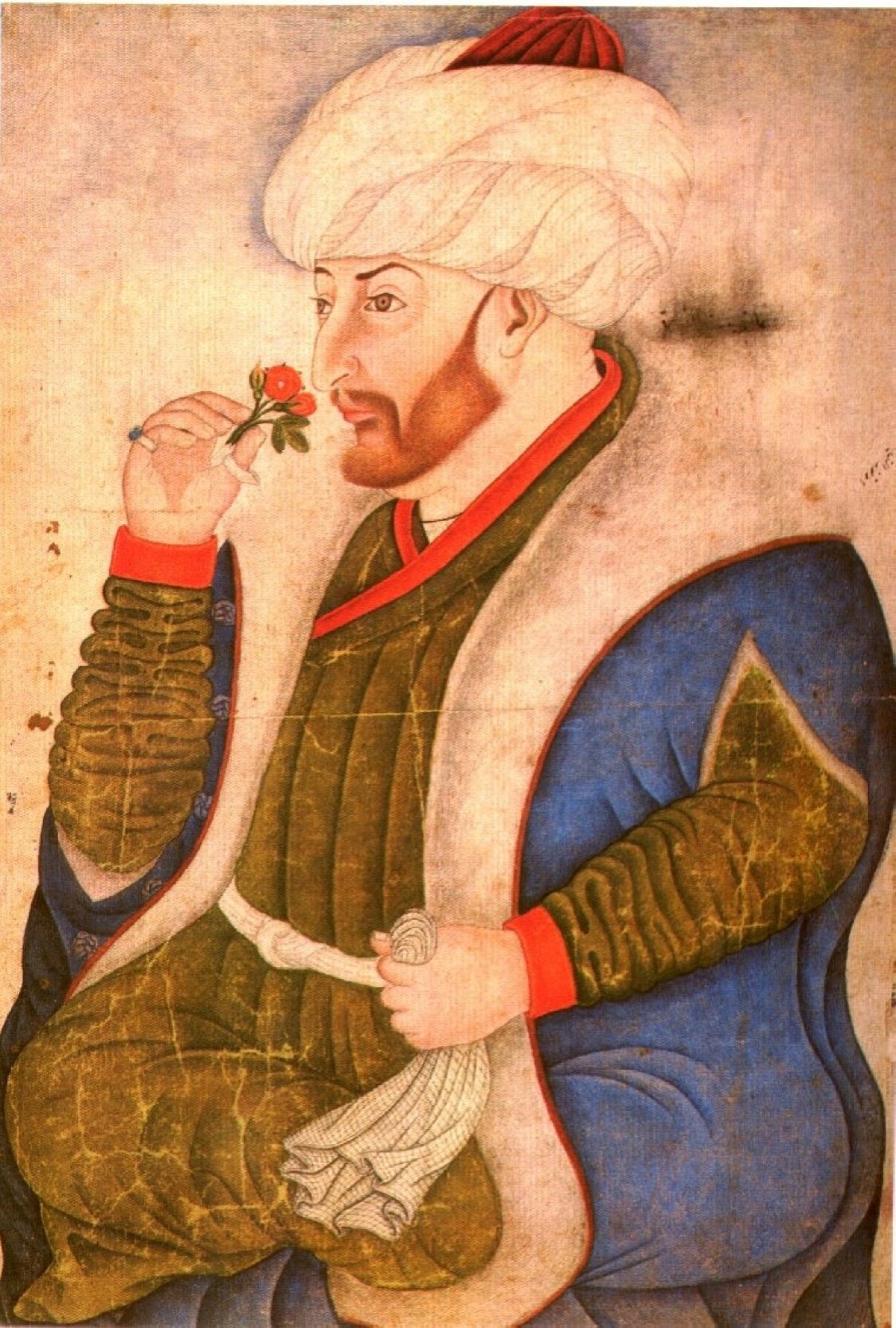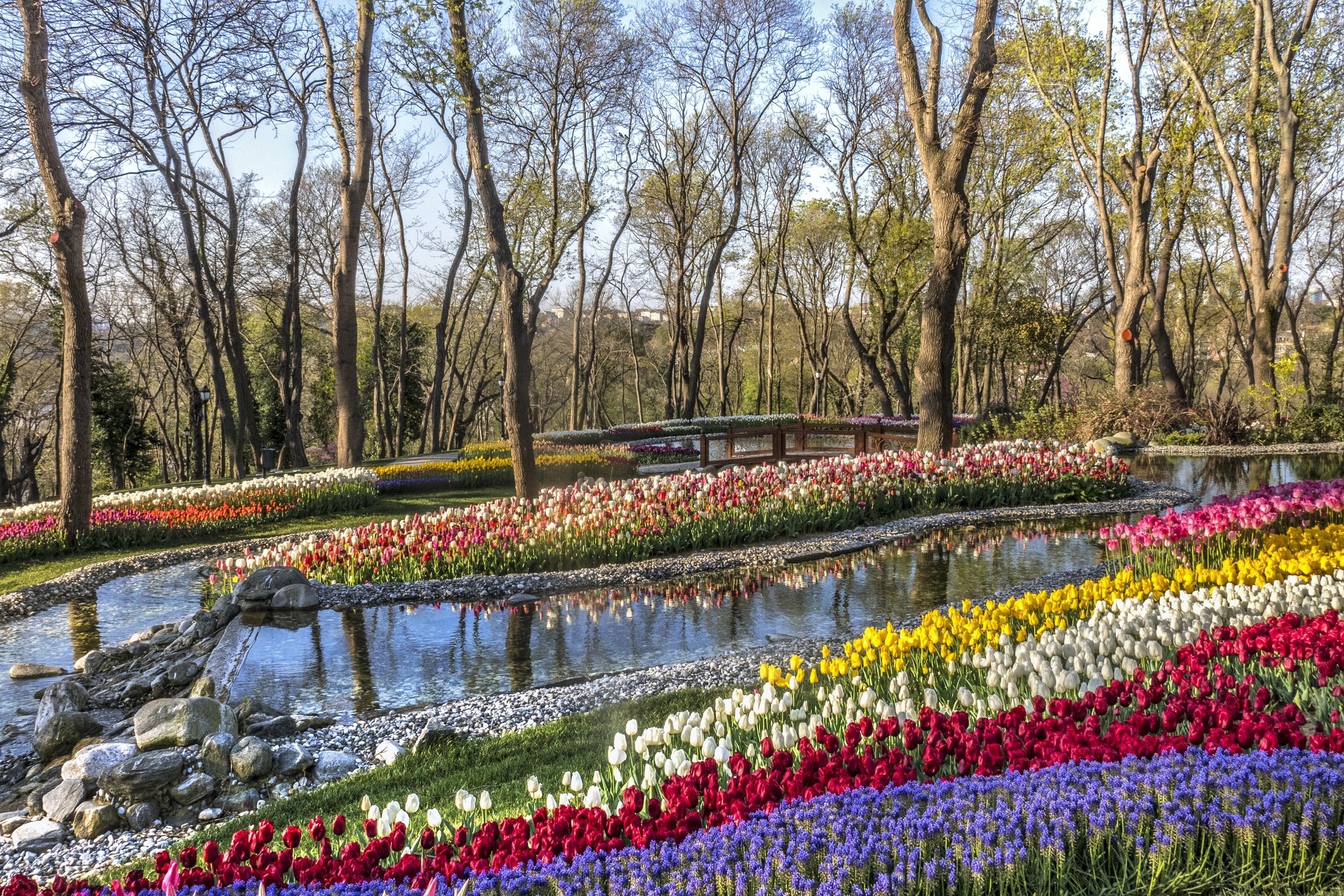.jpg)
LANGUAGE OF FLOWERS IN ISLAM AND OTTOMANS
Flowers are exceptional children of nature. They are perhaps the most pleasing for the eye and the soul due to their harmonious shapes, beautiful colors and unique scents. Most people prefer floral fragrances because of their natural and relaxing qualities. Even today flowers play a big role in the aromatic industry, particularly the light scent of a garden rose and wallflower, as well as more intoxicating blooms like jasmine and lilies. The Prophet Muhammad loved the scent of flowers, especially violets.

The Ottomans were a flower-loving civilization. In addition to those in the garden, they used to plant flowers in houses and in front of windows. Mothers and grandmothers looked at flowers as if they were looking at their children and grandchildren. Even growing flowers was a hobby of serious men. Floral patterns were preferred for dresses. Even a serious personality like Sultan Mehmed II was depicted by the artist with a flower in his hand.
Girls were named after flowers, and men attached them to their turbans. The tombstones of the ladies were decorated with flowers. The flowers both adorned the surroundings and softened hearts. Every Istanbul house had flowers. From the poor to the rich, there were flowers in pots and tin cans on the windows of every house. Every house had a garden or a hallway, even if it was small, in which the flowers enveloped the house with their scent.
Floral turban
Women's dresses were always made of floral fabric in the past. Even slippers were made of cloth that had floral motifs; moreover, a flower was attached to the toe of the shoe. Most Anatolian women's socks feature floral motifs, and each design has a name.
Even men's clothes would be floral. Sultans' robes decorated with carnations in the color of pomegranates are in museums. Carnations are a symbol of nobility and loyalty.
What about the turban? Flowers were even added to the curves of this solemn accessory. Most of the sultan's crests are in the form of flowers. Especially in jewelry, the flower is the main motif.
Besides dresses, headscarves and women's headdresses, called “yazma,” feature blossom motifs. For these, the flowers are embroidered along the edge, and fresh flowers are put in between. These are all works of art. The women who embroider flower motifs around their headscarves, on the edge of pillows, or plain fabrics are truly artists.
Love of flowers
The gentle nature of a person is also related to his fondness for flowers. Upper-class men, religious men and Sheikh al-Islam (top religious title) scholars grew flowers in their gardens. Even today, it is possible to see members of the European royal family in flower gardens with gloves and scissors in their hands. Many miniature paintings show Ottoman sultans holding flowers. In the past, it was customary to hold flowers and smell them occasionally for their relaxing and calming effect.
In Ottoman miniature paintings, there is no composition without flowers and no dress that is not decorated with them. As we see in old paintings, there are flowers on the tables. This is an old Turkish custom. It's the same with gifting someone flowers. For example, the lily of the valley, a symbol of peace, was once given as a gift to the French ambassador. Sending flowers for weddings, precious days and anniversaries was, and still is, a heart-warming occasion.
The use of flowers in decoration and textile was highly influenced by the Turks. Though it was a prevalent motif in China, the tradition was primarily passed to Europeans by Turks. Every foreign traveler who passed through the empire mentioned the Turks' love of flowers in their travel books.
The language of love
Flowers also have symbols that have passed into stories, chansonnettes and poems. Tulips and roses are loaded with Islamic meaning. The tulip symbolizes Allah (God) and the rose, the Prophet Muhammad. Both the shape of the tulip and the letters in the Arabic alphabet are the same as the word "Allah." It is a majestic flower that rises to the sky alone. It symbolizes oneness.

While carnations imply devotion; the lotus floating on the water, on the other hand, is considered symbolic of the dervishes who spread their prayer mats on the water. Likewise, the bowed violet represents humility; narcissus, smugness; hyacinth, a lovelock; and the rose, the lover's mouth. Though beautiful, daffodils symbolize an unattentive lover. They grow by the water's edge as if admiring their own reflections. This is where the term “Nergisi” (narcissist) used for self-righteous people in old Turkish comes from.
Gillyflower symbolizes the hope in the night since it opens in the evening, and the lily symbolizes a very passionate love with its ecstatic scent – so does jasmine. The language of love is poetry, its sign is handkerchiefs and its symbol is flowers. The rose petal that the lover puts in the handkerchief is also a sign he gives to his lover.
Sorrowful flowers
This fondness for flowers in textile and decoration among Turks is partly due to religious provisions. Because the religion of Islam, which forbids the use of pictures of living creatures in public, did not impose a restriction on flowers.
Flowers were even used on tombstones that should be an expression of sadness, especially tombstones for women. Since flowers are found on the turbans on male tombstones, there is a flower motif in an empty place in the inscription.
Those who visit Topkapı Palace admire the tulips, carnations and hyacinths on the walls and likewise the tiles that adorn mosques. These are like the face of Turkey that opens to outside world. Many tourists come just to see these patterns. In fact, Turkish-friendly foreigners such as Joseph von Hammer-Purgstall and Pierre Loti covered one room of their homes in their hometowns with tiles.
Just like everything, flowers are also a fashion statement. The poppy is often featured in Seljuk tiles. With its typical red color, it looks incredibly attractive on blue tiles. Roses and hyacinths were particularly popular in the 16th century and at the end of the 17th-century, tulips took over. A period is also named after them: the Tulip Era. In this period, a tulipmania, or tulip frenzy, began all over the world.
What if the season passes?
The most commonly used motif, especially in Ottoman carpets, is the flower. These carpets are works of art that sing the wishes of the girls who wove them. In the past, there were no art galleries like today. But every Ottoman house was like an art gallery. There were flower motifs on home cabinets, boxes, chests and even on the exterior doors of the houses.
Books are also intertwined with flowers. The illustrations themselves are already art. But not only that, they are often decorated on the edge with flowers. In mushaf (an Arabic word referring to a written copy of the Quran)and prayer books there are flowers, not dots, on the margins of the writing and at the end of the verses.
The outside of the book is made of leather, but some enthusiasts also decorate it with flowers. The tradition of sunbursts placed in the middle of the cover is a flower motif. Small floral prints on the covers are sometimes dyed with brocade. In fact, it is sometimes seen that flowers are made with colored paint on leather.
Since every flower has a season, some paper artists carved layers of paper or leather to create artificial flowers and painted them to benefit from their beauty even when the season is over. In the past, even the flower that fell to the ground was kept and dried between the pages of a book.
Önceki Yazılar
-
NO MARRIAGE WITHOUT PERMISSION!24.07.2024
-
THE TRUTH OF KARBALA17.07.2024
-
CONTRIBUTIONS OF THE TURKS TO ISLAM10.07.2024
-
OUR TRADITION OF THE ENTARI (JALLABIA ) HAS YIELDED TO TIME3.07.2024
-
GALLOPING THROUGH HISTORY: THE OTTOMAN EMPIRE'S POSTAL COURIERS26.06.2024
-
SUMMER HAS COME, LET'S GO ON AN EXCURSION...19.06.2024
-
HOW DID THE TURKS LOSE THE ARAB LANDS?12.06.2024
-
IT WAS AN ART OF EXECUTIONER...5.06.2024
-
ARAB NATIONALISM AND THE TURKS29.05.2024
-
HOW DID TURKS BECOME MUSLIM?22.05.2024